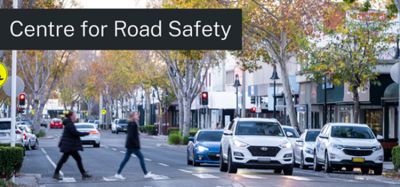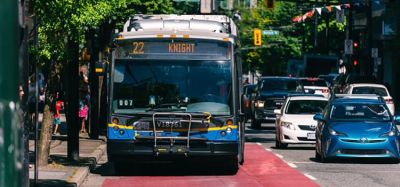A vision for the 21st century metro
- Like
- Digg
- Del
- Tumblr
- VKontakte
- Buffer
- Love This
- Odnoklassniki
- Meneame
- Blogger
- Amazon
- Yahoo Mail
- Gmail
- AOL
- Newsvine
- HackerNews
- Evernote
- MySpace
- Mail.ru
- Viadeo
- Line
- Comments
- Yummly
- SMS
- Viber
- Telegram
- Subscribe
- Skype
- Facebook Messenger
- Kakao
- LiveJournal
- Yammer
- Edgar
- Fintel
- Mix
- Instapaper
- Copy Link
Posted: 20 August 2014 | Christian Galivel, RATP’s Deputy Chief Executive Officer in Charge of Projects, Engineering and Investments | No comments yet
Each day, RATP transports over five million passengers on its Paris region metro network along with 1.7 million passengers on its two, high-capacity, regional express train lines – RER A and RER B. The technical conditions to operate these lines are particularly demanding with train frequency at peak hours pushing the technical capacity of the latest systems to their limits. Passenger service and reception conditions in transport facilities that are, in parts, over 100 years old are also extremely demanding given the high flows of passengers carried by RATP. For Intelligent Transport, Christian Galivel – RATP’s Deputy Chief Executive Officer in Charge of Projects, Engineering and Investments, explains why RATP has deployed innovative approaches to organise and optimise various passenger movements in transport areas, ensure fluid access controls and provide modern services in its facilities such as 3G connectivity, LED lighting and high-quality multi-modal information.
RATP has developed the ability to adapt its organisation and network at all times to the most stringent service quality standards.
The latest and perhaps the most striking example is without doubt the transformation of Paris network’s oldest metro line – metro line 1 – into a driverless line, which was achieved without major service interruption and without any compromises in passenger safety. Line 1, which was designed and built in the 19th century, offers its daily 750,000 passengers a service worthy of the 21st century. The full automation of line 1 resulted in a 7% increase in reliability at peak-times, which is now close to its 100% production target and with very short headway (95 seconds with the technical capacity to go as low as 85 seconds). The success of this experience prompted RATP in 2013 to pursue the challenge and launch studies to migrate line 4, the second busiest in Paris in terms of patronage, to driverless automation.
Even so, improving service to passengers cannot solely rely on changing the train control system. RATP is also gradually renewing all metro rolling stock with the prime objective of improving passenger comfort (reducing noise and vibration experienced by passengers, introducing refrigerated ventilation, installation of audio and video passenger information), enhancing equipment and therefore operations reliability (significantly reducing mean time between failure rates), and in particular cutting down energy consumption whilst offering additional services. One example is the renewal of rolling stock on metro lines 2, 5 and 9, which will be replaced by next generation trains that will save the energy consumption of an entire metro line by 2017 despite adding new services on the trains such as refrigerated ventilation.
Another major objective in improving customer service is a fully modernised service in public facilities. Transport service performance alone is no longer enough for passengers. Passengers expect to have a better experience during their stay in transport hubs. They want to remain connected to the Internet during their trip; they want pro-active passenger information that allows them to respond and adapt to an occasional operating problem or to optimise their journey. RATP has therefore committed to equipping its entire infrastructure with a 3G/4G mobile telecommunications network by the end of 2016. Three thousand multi-modal information screens will also be deployed in public areas. Passengers will also be informed about events or service disruptions on the network by customisable alerting systems and via social networks. Signage is also changing; more visible and intuitive ‘hyper-signs’ are being deployed to facilitate passenger orientation and make journeys more fluid. New, more efficient access controls with a smaller footprint and a larger passageway are also being installed in recently renovated stations. Many new customer services are being phased in, such as interactive touch-screen information panels, season pass renewals via the Internet at home, and video-telephony terminals for remote interaction with the customer. Renovated stations also have a new layout design and new fittings. Lighting has been enhanced for greater comfort, whilst use of the latest LED technologies has also cut energy consumption in half. Stations are also being gradually adapted to better cater to persons with sensorial disabilities.
Trying to improve each day an existing network is clearly challenging given the constraints of century-old infrastructure and the requirement to ensure passenger safety and uninterrupted service. However, RATP has developed the skills to reconcile history and the future in offering passengers the best possible service, in an environment and infrastructure that retain their distinctive and historical identity and constraints. These are both a precious legacy from the network’s 100 year-old history and an inspiration for stimulating challenges for our engineers.
The projects that have already been launched offer food for thought about what the metro system will look like in 2020 and 2025. It goes without saying that projecting over the longer term is more hazardous. The exercise is an interesting one, but must be undertaken with modesty and caution.
Let us begin by plunging into the urban metro world by 2050 before considering ambience and services.
In the Paris Region, the Nouveau Grand Paris network will be in operation. RATP will have completed construction of line 14, the backbone of the Nouveau Grand Paris network connecting the multi-modal hub of Saint-Denis Pleyel to Orly airport. The ‘Société du Grand Paris’ will have completed construction of line 15 in conjunction with the Greater Paris Transport Authority (‘Syndicat des transports d’Ile-de-France’ – STIF). Line 15 will serve as an orbital rail link around Paris and will facilitate suburb-to-suburb travel and the robustness of a network finally interlinked on the scale of the entire Greater Paris region. Lines 16, 17 and 18 will connect the major economic, university and residential hubs around the Paris region with tailored capacity metro facilities. Some lines of the current network will be extended to ensure connections with the new metro infrastructures. The network will feature between 70 and 100 additional stations and over 200km of additional double-tracks (i.e., doubling the current network), all of which recently designed. RATP will provide technical management services for these infrastructures and will have significantly participated in designing infrastructure and transport systems for these infrastructures either directly or through its SYSTRA engineering subsidiary.
In emerging countries, major cities will have continued to expand unchecked by 2050. Urban congestion and atmospheric pollution problems will have prompted authorities to implement accelerated infrastructure development programmes for high-capacity, urban public transport systems that in all probability will feature driverless metro solutions.
In short, there will be much larger and more numerous metro networks, and driverless metro lines will significantly increase in length to become the transport mode that sets the standard for dense and sustainable cities in the 21st century.
What will such metro systems look like? The requirement of unconditional passenger safety will, of course, remain the absolute priority in the distant future for new and modernised infrastructures. Reliability will be predicated on careful design and the use of innovative, high-performance preventive maintenance technologies. Network density and inter-operability with other forms of transport (surface and soft modes of transport, etc.) will be ensured by carefully planned inter-modality to round out overall service robustness with alternatives to occasional service disruptions in the transport system. Citizens will therefore be able to give up one or all of their private vehicles with full confidence.
Awareness of environmental considerations will have prompted authorities and industrial groups to find new technical solutions to improve the metro system’s overall energy consumption from stations to rolling stock and to integrate them in the urban energy grids.
Driverless metro solutions will be designed for optimal operation flexibility and immediate adaptation to patronage to ensure equal passenger comfort levels over time. Integrated design of rolling stock and transport facilities will prevent any discontinuity between metro systems and the city. Passenger services will be designed to ensure safe public transport usage that naturally uses the latest technologies and mobile connectivity tools.
On a more general level, tomorrow’s metro will ensure end-to-end customer support and handling with seamless integration of city and transport infrastructure that will operate even more closely together and in an even more integrated fashion than they do today.
Needless to say, it is all too easy to offer such promises today. The aforementioned description may seem a pipe dream. With that said, most of the technologies that can deliver such promises are not too far from maturity at the moment. They have not yet been applied to the urban rail transport industry, but they do not raise any technical challenge than cannot be resolved. The premises of tomorrow’s metro, as imagined by RATP, can already be glimpsed today in some achievements. Innovative passenger information and customer support tools are already being developed. Train operation is already being optimised to save energy. Stations integrating geothermal solutions are already being designed and interfaced with the energy requirements of buildings constructed at station ground level. Some of the game-changing breakthroughs needed in rolling stock and infrastructure reliability have already been made.
The main challenge is probably to find men and women with the motivation and abilities to share, to build bridges between disciplines, to ensure that the designers of rolling stock and transport systems dialogue with civil engineers, infrastructure maintenance specialists, operators, urban development experts and designers, and so forth. In short, the major challenge for the future is to round-out our integration know-how to design transport systems that are not merely a series of basic, independent components, but the culmination of globally optimised system operations bringing into the rail industry all the innovations from various technical fields. The technology already exists, as is very often the case, but successful implementation will depend on the quality and open-mindedness of the people addressing these projects. It is quite clear that our firm trust in the skills and motivation of our staff makes us very confident that we can make this dream come true.
Biography
Christian Galivel started his career at RATP in 1982 as Project Manager for the development and implementation of a speed-control system on the RER A (Paris regional rail system) which entered into service in 1989. Christian then worked on several engineering and maintenance missions until 2003, when he was appointed Head of Maintenance for RER Equipment. In 2006, Christian became Senior Vice-President for Equipment Maintenance and Transport Environments. From July 2009 to July 2013, he was Senior Vice-President for Rail Rolling Stock. Since July 2013, Christian has been RATP’s Deputy Chief Executive Officer in Charge of Projects, Engineering and Investments for the Greater Paris Project, and he is also a Member of the Executive Committee at RATP.
Related topics
Business Models, Fleet Management & Maintenance, Multimodality, Passenger Experience, Public Transport, Ticketing & Payments, Transport Governance & Policy
Issue
Issue 4 2014
Related modes
Metro
Related cities
France
Related organisations
RATP Group








